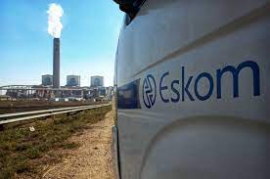
Eskom chairperson Mpho Makwana says the power utility is working around the clock to improve plant performance and reduce load shedding.
This as Eskom’s Generation Turnaround Programme seeks to achieve 65% energy availability factor (EAF) by 31 March 2024 and 70% by 31 March 2025.
Addressing the Demand Side Management Indaba in Johannesburg on Monday, he said the recent appointment of the energy executive Bheki Nxumalo as Head of Generation will bring stability at the power utility.
“When we rectified the appointment of the head of generation it was in the context of seeing him as the champion that will ensure that we achieve the requisite EAF and by extension achieving the EAF assures us of edging closer to stability in terms ameliorating load shedding,” Makwana said.
Nxumalo boasts some 20 years of experience in the energy sector at all levels and was working within the ranks of Eskom as Chief Executive Officer for Eskom Enterprise and Eskom Rotek Industries.
He has also worked as power station manager at two Eskom power stations and general manager at Kusile Power Station.
Makwana said Eskom is at an advanced state in the short listing process for the next new Chief Executive Officer (CEO).
“We now have a shortlist of five candidates,” he said.
Former Eskom CEO, André de Ruyter, resigned from the power utility in December. De Ruyter had been at the helm of the ailing electricity supplier since December 2019.
“We need to have a conversation about implementing smart metering in our country. If we were to implement smart metering it would contribute substantially to the grid’s performance. As the board, we are looking at the best practice in the world, we look at the broader energy outlook to get a greater sense of thinking around solving the load shedding problems,” Makwana said.
Energy Action Plan
In July last year President Ramaphosa announced the Energy Action Plan (EAP) aimed at easing and then ending load shedding.
The plan was developed through extensive consultation and endorsed by energy experts as providing the best and fastest path towards energy security.
Intensive work is underway to implement the plan, which aims to, firstly, improve the performance of Eskom power stations, and, secondly, to bring new generating capacity onto the system as quickly as possible.
Among the areas where progress has been made:
- The licensing requirement for embedded generation projects has been removed. Since government first raised the licensing threshold to 100 MW, the pipeline of private sector projects has grown to more than 100 projects with over 9,000 MW of capacity. South Africa expects the first of these projects to connect to the grid by the end of this year.
- Agreements have been signed with independent power producers for 26 renewable energy projects, which together will generate around 2,800 MW. Construction on these projects will soon start.
- An additional 300 MW has been imported through the Southern African Power Pool, and negotiations are underway to secure a potential 1,000 MW from neighbouring countries.
- Eskom has also launched a programme to purchase up to 1,000 MW of power from companies with existing generation capacity for a period of three years.
- Government has cut red tape and streamlined regulatory processes, reducing the timeframes for environmental authorisations, registration of new projects and grid connection approvals.
- Government has established a team of independent experts to work closely with Eskom to diagnose the problems at poorly performing power stations and take action to improve plant performance. Six power stations have been identified for particular focus over the coming months in order to recover additional capacity.
- SAnews.gov.za


